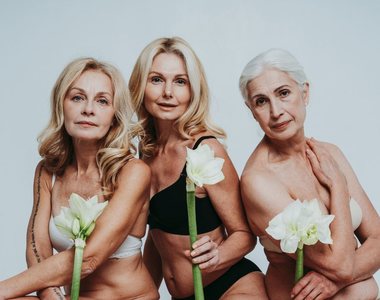
Before and after photos are ubiquitous for a reason. They are widespread because of what is known as the "social trigger" - a type of content that pushes people to see, feel or act in a certain way. These pictures make it clear to viewers that a situation (" after ") is more desirable than another (" before ").
Some pictures - for example a dish before it is cleaned with a dishwashing detergent and after it is cleaned - are harmless, but some others are problematic.
In other words, any "before and after" photo that focuses on a human being can send a dangerous message: Some body types, or faces, or hair types, skin tones, lip shapes, etc. are better than others. Some reasons why these comparisons are more problematic than you think:
1. Cause unhealthy comparisons.
"Although sometimes well-intentioned, the impact of photos before and after brings social and body comparisons, which can cause harm to anyone - especially people struggling with body image and eating problems," said Chelsea Kronengold, director of communication in the Association of Eating Disorders.
Many people who see these pictures look more like "before" than "after". And because the whole point of comparing before and after is to say "after" is better, they are more likely to end up feeling bad. Over time, this can lead to real harm.

2. They reinforce weight stigma and health prejudices.
Before and after photos exist in every corner of social networks, but they are more prevalent for weight loss. Often, these posts elicit comments that look positive, like "so inspiring!" or "you look great!" But there is another problematic side to these comments: The implication is that the person did not look great on his body before and that being weaker is always better.
"Këto mesazhe delikate dhe të hapura kontribuojnë në stigmën e peshës dhe përjetësojnë mesazhe të kulturës jo të shëndetshme të dietës që ndryshimi i trupit tuaj, humbja e peshës ose të qenit më i dobët, shihet si një arritje morale superiore,” thekson Kronengold.
Këto krahasime shtojnë paragjykimet për peshën dhe shëndetin. Një përmbledhje e vitit 2016 e botuar në JAMA zbuloi se njerëzit në kategorinë e indeksit të masës trupore "mbipeshë" jetojnë më gjatë. Një studim tjetër i vitit 2016 i botuar në International Journal of Obesity zbuloi se 50% e njerëzve të klasifikuar si "mbipeshë" ishin metabolikisht të shëndetshëm. Ndërkohë, 30% e njerëzve të klasifikuar si peshë "normale" ishin metabolikisht të pashëndetshëm.
Marrëdhënia midis peshës dhe shëndetit është tepër e komplikuar, por është e drejtë të thuhet se nuk mund të përcaktoni nëse dikush është apo jo i shëndetshëm duke parë një fotografi të tyre.

3. Fotot nuk tregojnë të gjithë historinë.
Trupat gjithmonë ndryshojnë - edhe personi që poston fotot nuk do të duket si "pas" përgjithmonë.
4. Këto foto i japin shumë vlerë paraqitjes.
Vetëm sepse se dikush është duke buzëqeshur në një foto "pas" nuk do të thotë se është i shëndetshëm mendërisht. Në fakt, mund të jetë e dëmshme të supozosh se dikush ka përjetuar ndryshime pozitive në jetë vetëm sepse "duket më mirë". "Në vend që të theksojmë transformimet e trupit, ne duhet të festojmë fitoret e shëndetit mendor, ngjarjet kryesore të jetës dhe arritjet që nuk kanë asnjë lidhje me pamjen dhe/ose peshën," tha Kronengold.
Sources: Huffington Post, Precision Nutrition, Social Triggers.com





